Art World
5 Reasons to Love Tina Modotti Even More Than We Already Do
She was only 45 when she died suddenly.
She was only 45 when she died suddenly.
Caroline Elbaor

Italian artist and activist Tina Modotti captured images of her adopted country of Mexico during her brief, but lively, life on this planet. Years later, she finally is getting the respect she deserves, as her photographs are held in collections such as New York’s Metropolitan Museum of Art and Museum of Modern Art, the Philadelphia Museum of Art, and the San Francisco Museum of Modern Art. Most recently, Modotti was honored in “Agitprop!” at the Brooklyn Museum, a 2016 group exhibition focusing on activist artists.
The photographer was a strong presence in Mexico City’s bohemian art scene (which included Frida Kahlo, Diego Rivera, and Jean Charlot), as well as an activist. Her peripatetic life brought her around the world and then back to Mexico, where she died in 1942 at the age of 45. On her way home from dinner at the poet Pablo Neruda’s house, she unexpectedly succumbed to congestive heart failure, but many question the validity of this diagnosis when considering her young age and controversial past; Rivera went so far as to openly blame Vittorio Vidali, a Stalinist whom the artist had an affair with, for her untimely death.
In commemorating her on her birthday, August 16, artnet News has gathered a few facts about Modotti and her colorful life below.
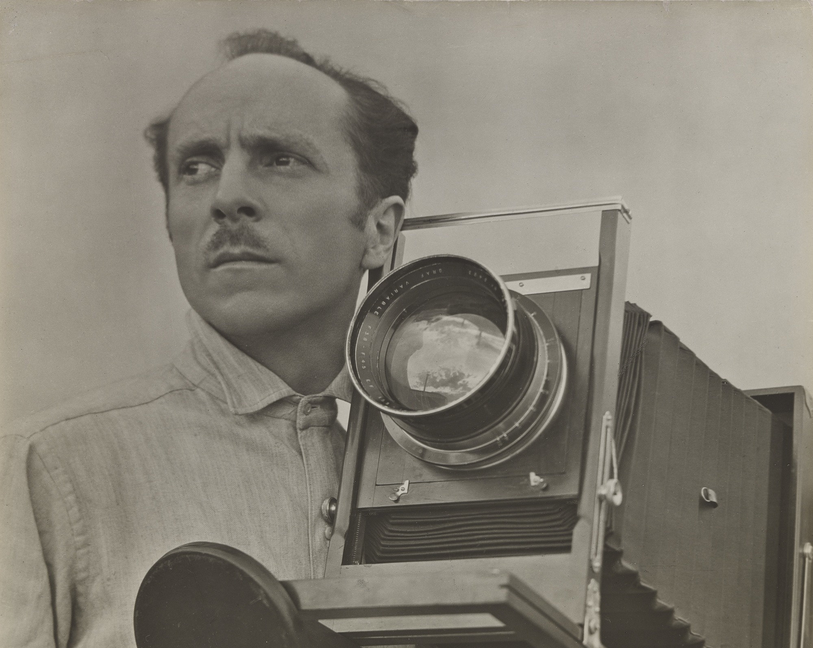
Tina Modotti, Edward Weston , 1924. Courtesy MoMA.
1. She was a silent film actor.
Modotti had immigrated from Italy to San Francisco at the age of 16, and she soon after moved to Los Angeles to pursue a career in acting. She starred in the 1920 film The Tiger’s Coat, and also held minor roles in two silent films.
Though she never saw true success as an actress, it was through acting and modeling that she met Edward Weston, with whom she became romantically and professionally involved, during her marriage to artist and writer Roubaix de l’Abrie Richey.
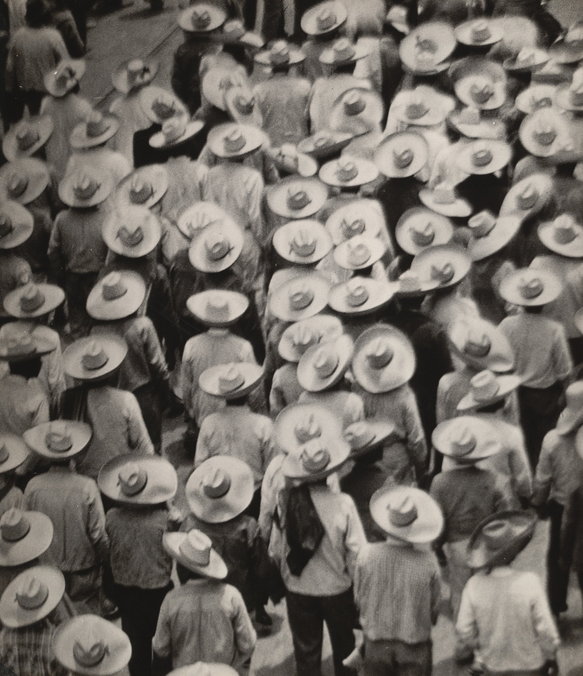
Tina Modotti, Workers Parade, 1926. Courtesy MoMA.
2. She makes an appearance in several of Diego Rivera’s murals.
Following her husband’s death, Modotti and Weston opened a small portrait studio in Mexico City, where they met the likes of Frida Kahlo and Diego Rivera. Modotti often documented Rivera’s murals with her camera, and the two soon embarked on an affair, during and after which he portrayed her in his works, including The Abundant Earth (1926) and In the Arsenal (1928).
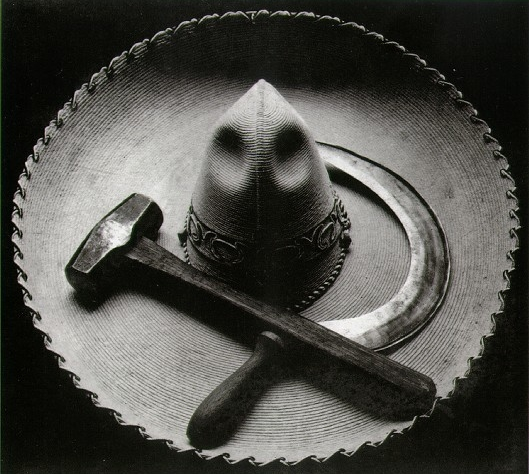
Tina Modotti, Mexican Sombrero with Hammer and Sickle, 1927. Courtesy Fotocommunity.
3. She was a fierce political activist.
Modotti and her circle of close artist companions in Mexico City were all politically-involved, and in 1927, she joined Mexico’s Communist Party. For Modotti, the medium of photography was a way to document social change.
This sentiment can be seen in Workers Parade (1926), which exemplifies Modotti’s interest in class struggle, as well as in the 1927 photograph Mexican Sombrero with Hammer and Sickle—which is anything but subtle.
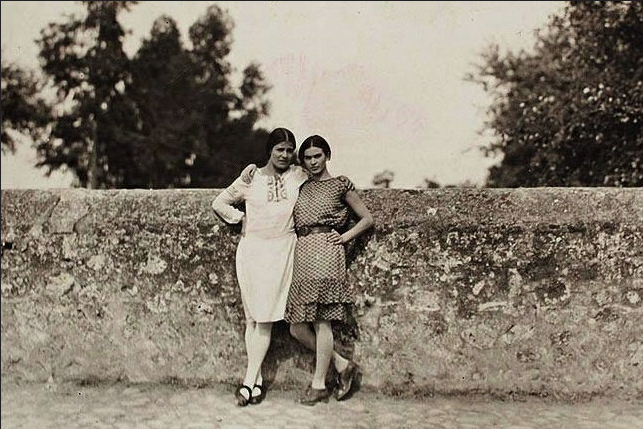
Tina Modotti and Frida Kahlo, circa 1928. Courtesy Flickr Creative Commons.
4. She was close friends with Frida Kahlo.
In spite of her romantic relationship with Diego Rivera, Modotti maintained a close friendship with his wife—the legendary painter in her own right—Frida Kahlo. (In a bizarre twist of fate, it is storied that Modotti in fact introduced Kahlo and Rivera during a party hosted at Modotti’s Mexico City home.)
The relationship between the two women and their work is explored and compared in Laura Mulvey’s 1983 short film, Tina Moddoti and Frida Kahlo, as well as depicted in the Oscar-nominated 2002 film Frida, in which Modotti was played by American actress Ashley Judd.
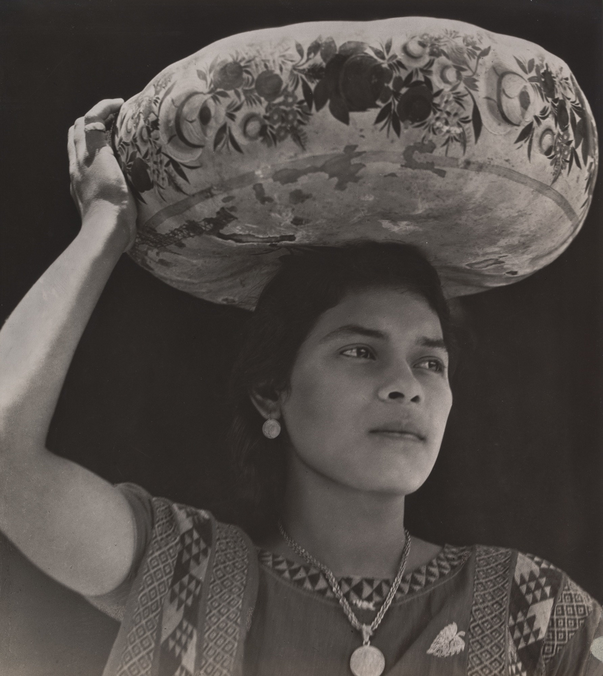
Tina Modotti, Tehuantepec Type, 1929. Courtesy MoMA.
5. Despite the difficulties, she found her way back to Mexico.
In 1930, as continued political upheaval led to increased violence in Mexico, Modotti was accused of the murder of Julio Antonio Mella, a well-known Cuban communist. Though she was soon cleared after her arrest, an anti-communist campaign was mounted by the Mexican government, and she was again jailed following an assassination attempt on the Mexican President Pascual Ortiz Rubio, for which she was blamed.
Modotti was deported, and she spent her years after in Berlin, Moscow, and Spain, before she found her way back into Mexico, though the true story of her return remains unclear.
She is buried in Mexico City, the city she loved.